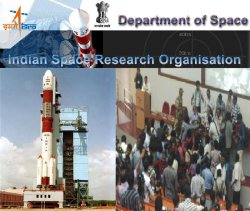ID :
296348
Tue, 08/20/2013 - 10:10
Auther :
Shortlink :
https://www.oananews.org/index.php//node/296348
The shortlink copeid
Fuel Leakage Forces ISRO To Call Off GSLV D-5 Satellite Launch

New Delhi, Aug 20, IRNA - The launch of a Geosynchronous Satellite Launch Vehicle (GSLV) was called off by Indian Space Research Organization (ISRO) at the eleventh hour Monday evening due to fuel leak in its second stage in a setback to the mission to test its homegrown cryogenic engine after its failure in three years ago.
The first mission of the rocket (GSLV D-5) in three years today was crucial for testing the cryogenic engine to give the country the capability for launch of big telecommunication satellites and 3,000 kg plus payloads after failures of the earlier GSLV twice in 2010-- one with indigenous cryogenic engine and another Russian made.
The much awaited launch process from Sriharikota in South Indian state of Andhra Pradesh, for which ISRO had commenced a 29-hour countdown Sunday, was suspended some 74 minutes ahead of the scheduled launch time of 16:50 hours IST (Indian Standard Time) after officials noticed fuel leak in the second stage of the rocket.
The countdown progressed well and a few minutes ago, we observed a leak in the fuel system of the second stage of the vehicle. And because of this we are calling off the launch, pti reported quoting (ISRO) chairman K Radhakrishnan announced at a press conference at the Satish Dhawan Space Center.
A new date will be announced later, he said.
An ISRO scientist said there was no problem with the cryogenic engine of the rocket which was to have carried the 1,982-kg GSAT-14 satellite.
This was the second attempt by ISRO to flight test the indigenous cryogenic stage after the unsuccessful launch of the previous mission GSLV-D3 on April 15, 2010.
The next GLSV flight with a Russian cryogenic stage also failed in December 2010.
Four of GSAT-14s predecessors were successfully launched by GSLV during 2001, 2003, 2004 and 2007 respectively.
The main objective of todays GSAT-14 mission was to augment in-orbit capacity of Extended C and Ku-band transponders and provide a platform for new experiments.
The GSLV is a three stage/engine rocket. The first stage is fired with solid fuel, the second is the liquid fuel and the third stage is the cryogenic engine. Geosynchronous satellites are placed in orbits 36,000 km above the earth./end





